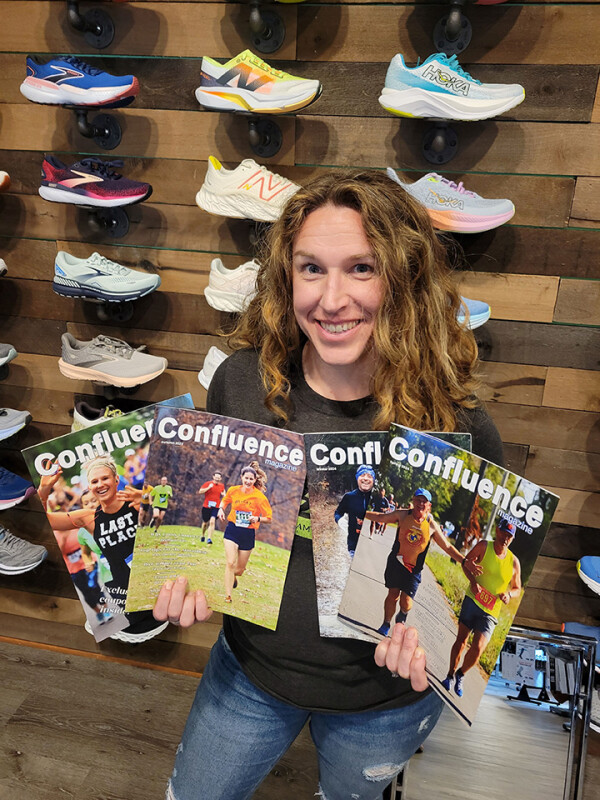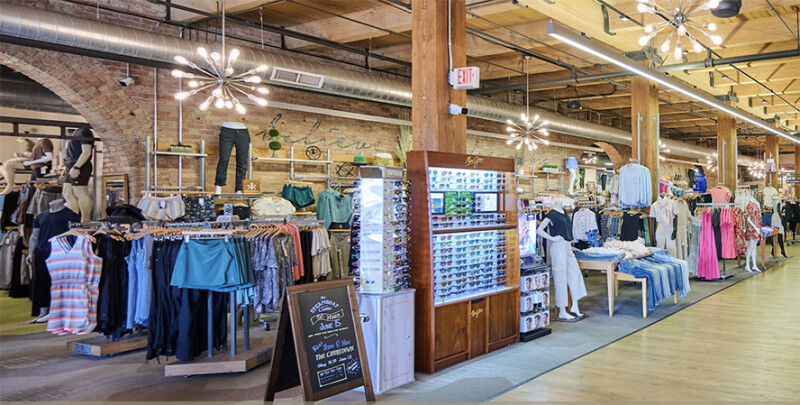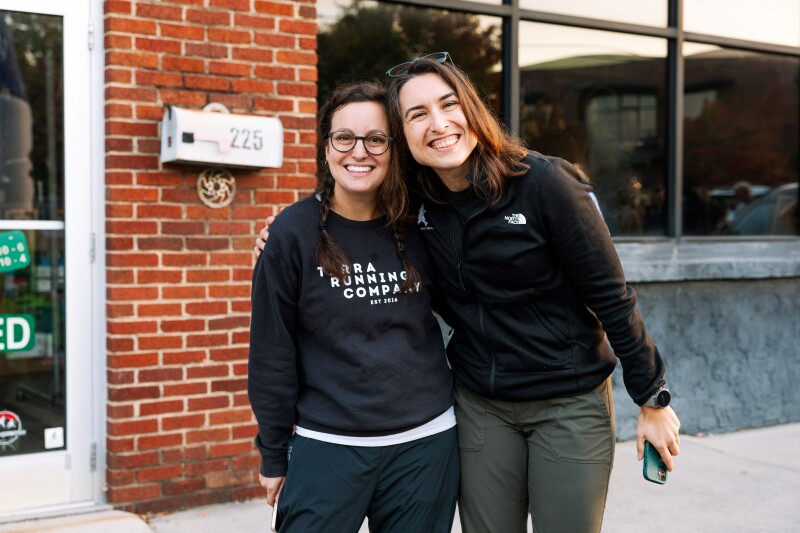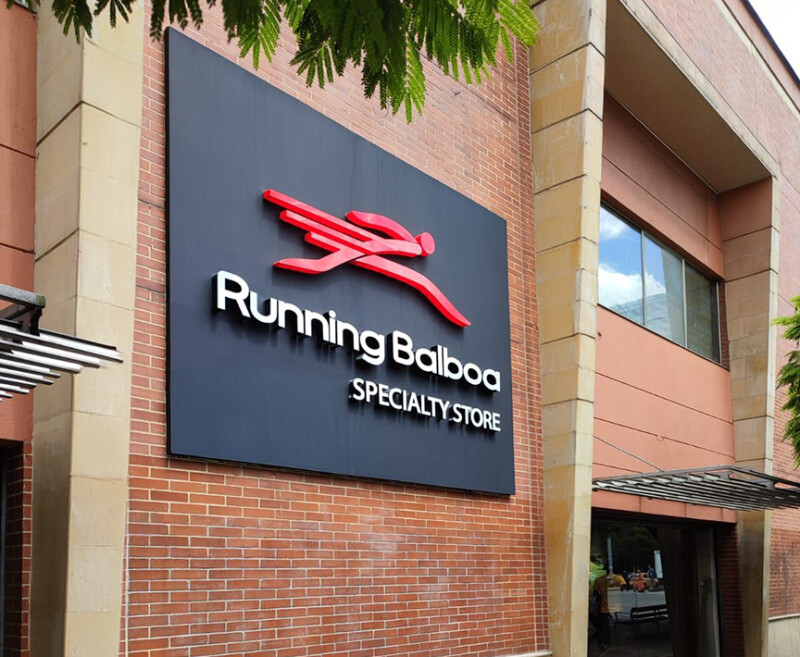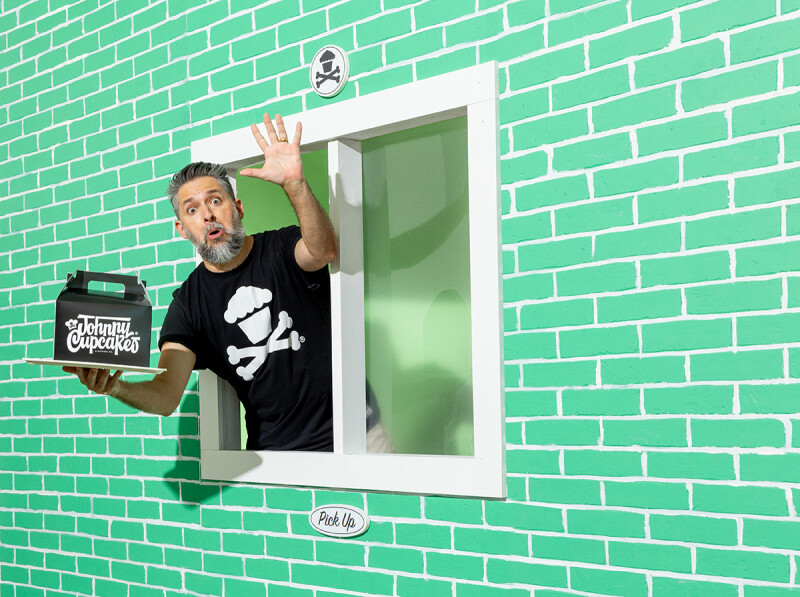Jenna Gawors chuckles as she recounts the launch of Confluence Magazine.
As the 2022 holiday season approached, Gawors and her colleagues at Confluence Running, a chain of four New York-based run specialty shops, wanted to get something tangible into the hands of prospective customers to entice holiday spending. A flier, maybe a postcard? Simple enough, right?
But as the group’s conversations progressed, they lamented the slow return of store runs and races in the post-COVID world. While store sales had increased, running as a community experience had dwindled, a reality they wanted to reverse. In time, leadership’s attention turned to something far more involved and daring: a full-color magazine.
“We wanted to create something to build community, something that had useful information and something people would see their faces in and want to keep around,” says Gawors, Confluence Running’s chief operating officer. “Maybe we’d get some residual marketing out of it, too.”
Once the decision was made to move ahead with a magazine, store leadership cranked out the 16-page debut issue in four days.
“Crazy,” Gawors says with a laugh. “As if we didn’t have enough on our plate already.”
The inaugural issue of Confluence Magazine wasn’t a one-and-done effort, either. Quite the opposite, in fact. It’s now a prominent marketing and brand-building tool for Confluence Running, which produces three issues each year strategically timed around key sales periods – spring, back-to-school/fall marathon season and the holidays.
Issues feature a mix of helpful articles on topics such as plantar fasciitis, selecting footwear, choosing the right sports bra and strategies to stick to a fitness routine. Also peppered within the pages are spotlights of local races, running products and people. The March 2023 issue, for instance, included interviews with local prep stars-turned-pro runners Emily Mackay and Dan Schaffer.
“It’s a fun, feel-good thing and not overly salesy,” Gawors says. “We really try to create value for our customers and provide content they’ll find interesting and useful.”
Gawors says it costs about $2.50 to print and mail each issue with much of the editorial and design production completed internally. It defrays those costs by selling ad space to vendors as well as local businesses, including a prominent local credit union.
Though the Confluence Running database hosts some 40,000 contacts, each issue’s 5000 copies are selectively distributed to customers based on the issue’s content.
“My husband’s pretty good at data mining,” Jenna Gawors says of Confluence Running owner Matthew Gawors. “And that’s good because there’s no way we could produce and ship 40,000 copies.”
For those who want to see every issue, Confluence Running offers a free subscription on its website – a move prompted by customer interest – while the company’s retail shops host a few copies of the magazine as well.
Generating rewards
Gawors says the magazine helps build connections and affinity for Confluence Running, which celebrated its 10th anniversary last year. A recent pictorial spread of throwback race photos, for instance, generated plenty of good buzz.
But Gawors is also convinced the magazine bolsters store sales. After the spring 2023 issue of Confluence Magazine dropped in early April 2023, Gawors says Confluence Running recorded its biggest revenue month to date.
“Typically, April is maybe our fourth best month in sales, so this jump was noticeable and significant,” she says.
Gawors recalls one woman entering the shop and surveying nutrition. She mentioned to Gawors she had read a Confluence Magazine story on the benefits of nutrition and it got her thinking about incorporating energy gels into her half marathon program, especially as she was chasing faster times.
“I really believe the magazine helps establish us as the go-to resource people need for support and knowledge around all things running,” she says.
Though publishing a magazine is a substantial effort, Confluence Running leadership remains committed to the endeavor and evolving the magazine as a tool for marketing, branding and driving community connections. Gawors is particularly interested in bringing in additional authors and community members to produce content. She is also considering expanding the magazine beyond its current 24-page format.
“And who knows,” she says, “maybe someday we will send out every issue to every customer.”
